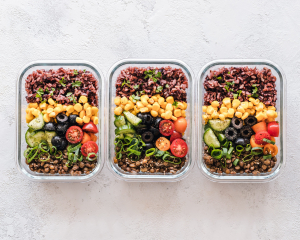You don’t need that fancy avocado salad every time you think of eating something healthy because today we are providing you with a complete guide about “Healthy Eating On A Budget” . Yes you got it right, eating what your body actually needs without breaking the bank!
It’s never too late to step up and start improving your eating habits. Generally, we spend so many years eating junk food, and we don’t even realize that we are on the wrong track. It is our body that gives us signals; maybe a glucose spike in the body, or some sore muscles, or the lack of focus and concentration during work, or shortness of breath. You should never underestimate these signs, and the best way to act upon them is to correct your eating habits.
Understanding What Actually Is Healthy Eating On A Budget
When the term “Healthy Eating” or “Clean Eating” is used, people often misunderstand it as some fancy, expensive way of eating that’s beyond their reach, but this is not the case. Today, we will tell you how you can eat healthy while being on a budget. Believe me, you don’t need to break the bank to start eating healthy. It is just a matter of a few alterations that you can make in your daily lifestyle and diet. So, let’s jump into it.

Understand the Macronutrients:
First things first, you need to understand the role of these 3 important macronutrients in your body: carbohydrates, protein and fats.
In simpler words, carbs are your body’s preferred source of energy to any activity that we perform, proteins are the building blocks of our body required to build lean muscle in the body, and fats are the essential energy source that regulates our hunger.
Consuming all 3 macronutrients is essential for us. There’s nothing like good fat or bad fat; as long as you are eating everything in a controlled quantity, it doesn’t cause any weight gain. People talk so much about low-carb/high-fat diets, but in reality, balanced eating is the way to go.
So, next time when you go to the supermarket, don’t fill in your cart with all meat/fish, protein shakes, avocados and all. Instead, aim to shop for balanced nutrients from all the groups. It will save you a lot of money.
Buy Local Food:
You don’t need to spend your money on that fancy imported cereal on the shelf that promises you a lot of healthy vitamins but actually it is all sucrose. Local cereals will give you the same amount of energy, but the key is to use it without sugar, or if you are craving some, you can always add some honey or stevia to it.
Similarly, buying locally available seasonal fruits and vegetables will give you more nutrients than frozen berries and kiwis. Your motto should be to eat local and eat seasonally when it comes to healthy eating.

Use Portion Control Trick:
People often gain weight or couldn’t come up to their goal weight despite eating all the macronutrients. If you are one of them, note this before getting disappointed. Eating all macronutrients in a balanced way is the key to achieve your target weight. You should learn to eat while controlling your food portions. Avoid big portions of bread or rice, instead have a balanced plate with ¼ of meat, ¼ of bread/rice and ½ of salad or leafy greens.
During family dinners, serve plates with single servings. In this way, you will be able to stay within your budget while eating healthy. Everyone in the family should have the salad with their food in order to balance the protein rich foods.

Plan Your Meals:
This is the biggest mistake we make. We often don’t plan our meals in advance and end up eating that slice of pizza or a cheesecake lying around in our refrigerator. Plan your meals in advance, be it daily or weekly. Get the ingredients beforehand and prepare your meal before you get too hungry.
Meal planning also includes choosing healthy options like beans, chickpeas or oats. These items never go out of stock, are reasonably affordable, and high on nutrients.
Plan your weekly menu and put it on the refrigerator. Try to create a balanced plan with variety for all seven days so you don’t get bored and out of budget. Consider having different food options: grilled meat, sautéed vegetables, lentil soup, baked pasta, cream soup, or tuna sandwich, so you can manage your budget.

Buy Grocery in Bulk:
Running out of ingredients every time you are cooking is quite bothersome. It is always wise to buy your whole month’s groceries in one go. In this way, you can save money as economy packs of grocery items offer more value to money. You can also avail many promotional deals using vouchers or codes, or offers like buy one get one free.
Avoid items like ketchup, chips, sauces or flavoured juices as they are only good in taste and have an adverse effect on your health.
Invest in a good low-calorie sweetener:
Cutting the white poison (sugar) from your life is extremely important. Once you eliminate sugar from your diet, you will experience some amazing changes in your health. However, we accept the fact that it is a difficult task, as sugar is very addictive. You can always use alternatives like Stevia, honey or brown sugar. Stevia can be the best choice as it’s low in calories. Honey or brown sugar can be healthy, but their calories are the same as white sugar. Invest in a good alternative to sugar once and for all to avoid health issues and save your money.

Eat Homemade:
Eating on a budget cannot be achieved if you are a fan of eating outside. It is about time that you change your habits and start cooking your meals in the comfort of your own home. Get all the healthy ingredients beforehand, and you will enjoy cooking your healthy pizzas and pasta for half of the price that most of the restaurants offer. By eating homemade food, you are always aware of what kind of oil and ingredients you are using and what is going inside you because you are what you eat, after all.
Conclusion:
Eating on a budget was never that easy. We have simplified the way you can indulge in healthy eating even if you are on a shoestring budget. Now, we don’t think that you have any excuse left to not follow healthy eating.
